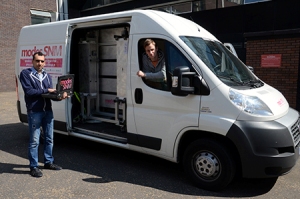Jun 12 2014
A new system to better detect radiological threats has been developed with the University of Liverpool and is now being trialled at customs organisations across Europe.
 The system has already undergone rigorous testing at the Port of Rotterdam, and by the Irish tax and customs administration, as well as other European agencies
The system has already undergone rigorous testing at the Port of Rotterdam, and by the Irish tax and customs administration, as well as other European agencies
The Modular Detection System for Special Nuclear Material (MODES_SNM), eases the operational burden associated with the expensive process of investigating the many ‘everyday’ sources of benign radiation such as cat litter, fertiliser, ceramic tiles and even Brazil nuts.
First of its type
The MODES_SNM system – the first of its type in the world to combine fast and thermal neutron detection – is the result of a pan-European project – funded by the European Commission under its FP7 framework programme. – that developed and integrated technologies originating in fundamental science research conducted at places like CERN, the European Laboratory for Nuclear Research near Geneva.
The University of Liverpool team from the Department of Physics contributed in a number of areas of the development as well as the testing campaign, and had full responsibility for the integration of the system.
It has already undergone rigorous tests at the European Commission’s Joint Research Centre, the Port of Rotterdam, and by the Irish tax and customs administration as well as other European agencies.
As part of the recent tests the system has been used to verify that parked containers do not contain threats such as uranium, plutonium, or radiological components for ‘dirty bombs’.
A unique advantage of the MODES_SNM system – which is modular and mission configurable – is its ability to identify materials surrounding a potential threat object.
This information is of high value, as it can allow operators to exclude the possibility of a detected plutonium source being a nuclear weapon.
More sustainable
Furthermore, the MODES_SNM system is more sustainable than current systems, as it does not use 3He, the expensive raw material that is typically used in most neutron detection systems.
Particle physicist and head of the Liverpool team in the project, Professor Christos Touramanis, said: “MODES-SNM is a great success and a textbook case for an EU project: bringing together universities, industry and government agencies it delivered in two years a near-production device utilising cutting edge technologies, which has been tested under real conditions by end users all over Europe.”